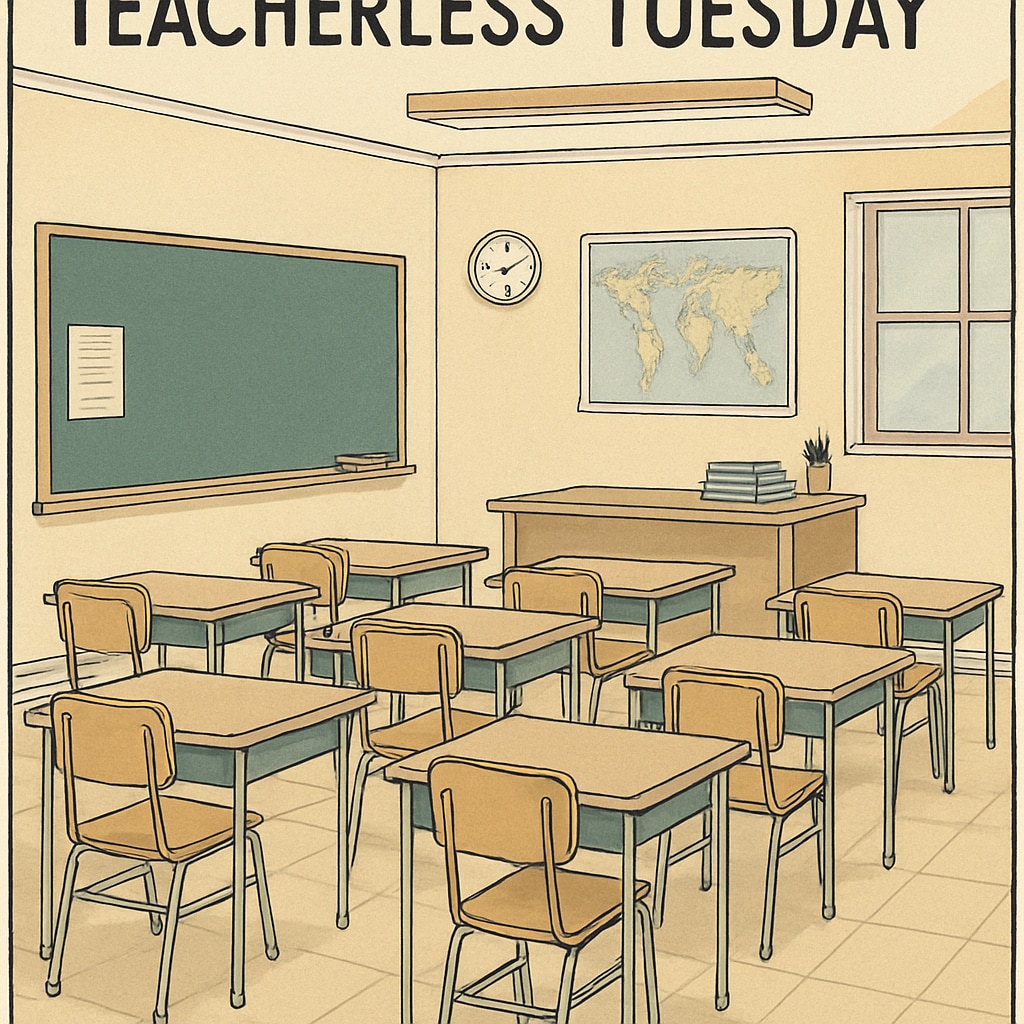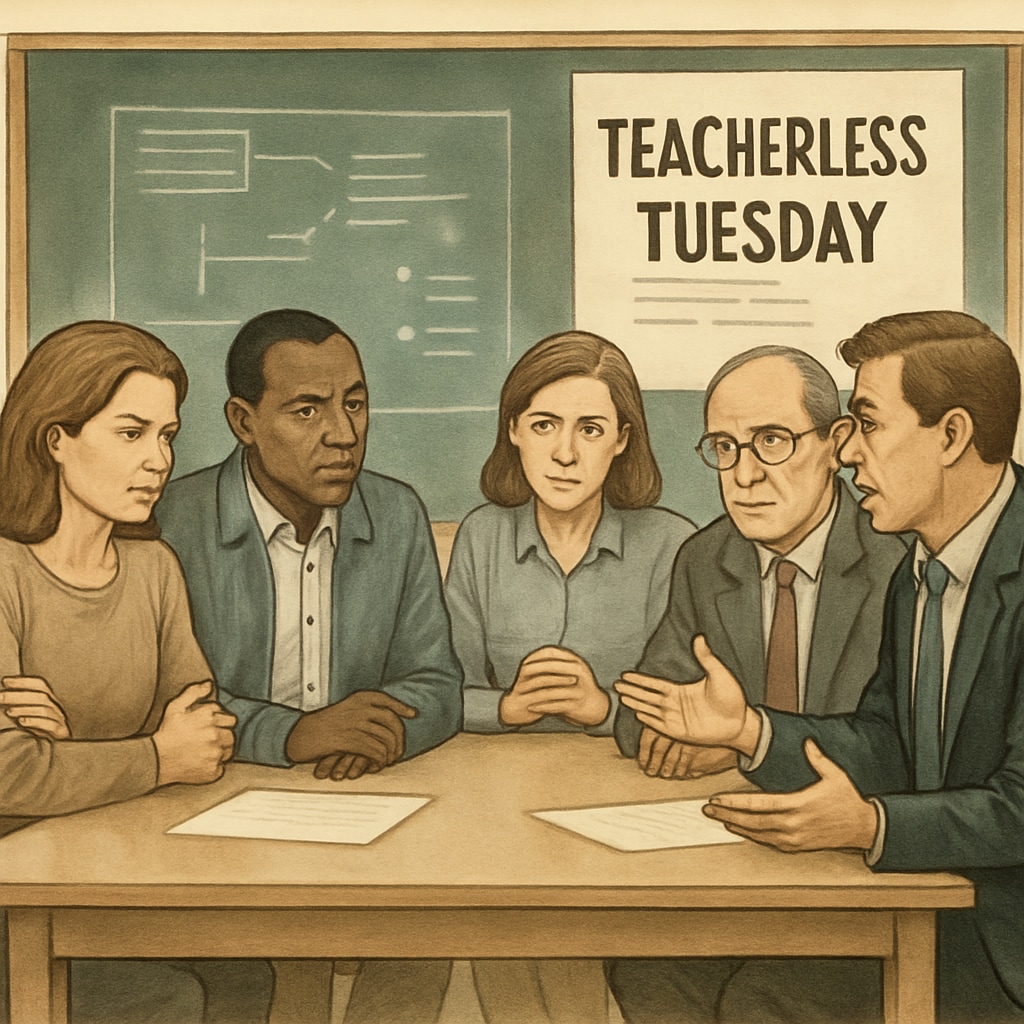In recent years, Teacherless Tuesday,教师抗议,集体请假(英文) has emerged as a unique and silent protest strategy within the education system. This coordinated absenteeism involves teachers collectively taking leave, often on the same day, to spotlight systemic issues such as inadequate funding, excessive workloads, and dwindling resources. As a result, classrooms remain empty, leaving students, parents, and administrators to confront the stark reality of an educational system under strain.
What Is Teacherless Tuesday?
Teacherless Tuesday refers to a coordinated effort by educators to collectively take leave on a specific day of the week, usually Tuesday, as a form of silent protest. This action is not an outright strike but rather a strategic form of absenteeism designed to disrupt normal school operations without directly violating contractual obligations. By leaving classrooms empty, teachers aim to draw attention to the systemic challenges they face, such as stagnant wages, overcrowded classrooms, and insufficient resources.
Unlike traditional protests or strikes, Teacherless Tuesday is relatively low-profile, avoiding public demonstrations or media confrontations. Its effectiveness lies in its visibility within the school environment, where parents and administrators must grapple with the implications of missing educators.

The Motivations Behind Collective Absenteeism
Teachers across the globe have adopted Teacherless Tuesday as a response to mounting frustrations within their profession. Some of the primary motivations include:
- Inadequate Salaries: Many educators feel their compensation does not reflect their workload or the importance of their role in shaping future generations.
- Resource Shortages: Schools often lack basic supplies, technological tools, and support staff, placing undue pressure on educators to fill these gaps.
- Burnout and Stress: Increased administrative tasks, overcrowded classrooms, and high-stakes testing contribute to widespread teacher burnout.
- Policy Frustrations: Teachers may feel excluded from decision-making processes that directly impact their profession, leading to dissatisfaction and disengagement.
Teacherless Tuesday thus becomes a vehicle for educators to express their grievances without risking legal repercussions or alienating their students. As a result, it is gaining traction in districts that have long ignored the growing crisis in education.
Impact on the K12 Education System
The ripple effects of Teacherless Tuesday are significant. On one hand, this form of protest highlights the critical role teachers play in the functioning of schools. On the other hand, it exposes the vulnerabilities of an educational system stretched to its limits. Key impacts include:
- Disruption to Learning: Students lose valuable instructional time, which can affect academic outcomes, particularly in underprivileged communities.
- Parent Frustration: Parents often have to scramble for childcare or alternative arrangements, leading to broader community awareness of the issues at hand.
- Administrative Challenges: School leaders are forced to confront the logistical difficulties of running schools without sufficient staff.
- Policy Conversations: The visibility of Teacherless Tuesday may compel policymakers to address systemic issues with greater urgency.
While these impacts are disruptive, they underscore the necessity of addressing the root causes of teacher dissatisfaction to ensure the long-term stability of the education system.

Is Teacherless Tuesday a Sustainable Strategy?
While Teacherless Tuesday has succeeded in raising awareness, questions remain about its sustainability. The repeated absence of educators risks alienating stakeholders, including parents and policymakers. Additionally, prolonged disruptions to the learning process may lead to unintended consequences, such as decreased student performance and increased dropout rates.
To ensure the success of movements like Teacherless Tuesday, educators must balance silent protest with active engagement. Open dialogues with administrators, transparent communication with parents, and collaboration with policymakers can transform these actions into long-term solutions.
In conclusion, Teacherless Tuesday represents a powerful yet nontraditional form of protest that sheds light on the urgent challenges within the K12 education system. Its success depends on the collective efforts of educators, school leaders, and policymakers to address these systemic issues and rebuild trust within the community.
Readability guidance: This article uses short paragraphs, lists, and clear transitions to ensure accessibility for a broad audience. It balances emotional appeal with factual information to engage readers while maintaining professionalism.


